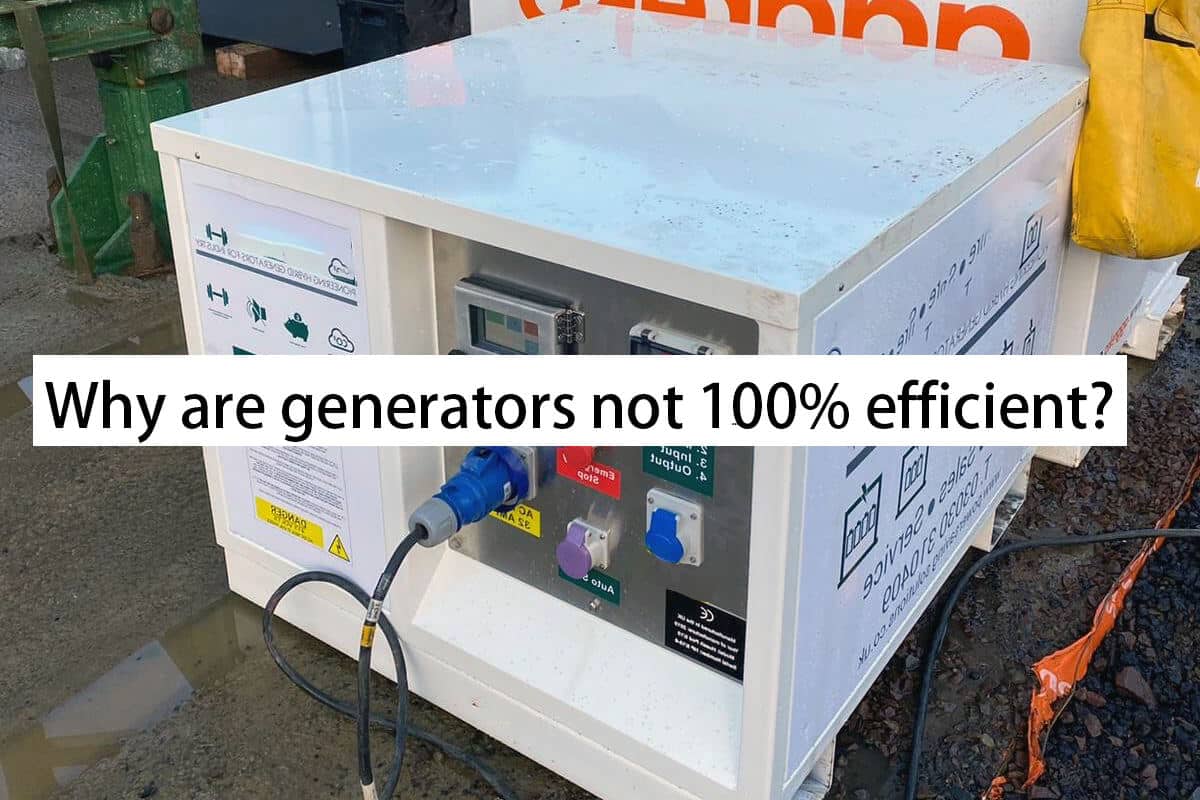generator danger of running at low load or no load
- BY BISON
Table of Contents
Running a generator without load, also known as “no-load operation” can have severe consequences on the gas generator’s performance and longevity.
In this situation, the BISON generator is not linked to any load, electrical equipment, or electrical instruments that would consume the electricity it produces. Instead, the electricity is essentially “wasted” as nothing is utilizing it. This scenario may arise when a generator undergoes testing or a problem with the electrical system causes the generator to operate without a load.
This can occur when the generator is not providing power to any loads or equipment, leading to damage to the generator, poor fuel efficiency, and even failure. It’s important to understand the dangers of generator idle running and the solutions to prevent it. In this article, China BISON will explore the causes of generator no-load condition and generator no-load operation, the impact on generator performance and longevity, and provide expert tips on how to prevent this from happening and improve overall generator efficiency.

Risks of Generator running without load
Here are some of the risks of a generator running without load benefits.
If a portable generator is run without load for an extended period of time, it can cause problems with the generator’s voltage regulation. This can lead to issues with the generator’s ability to produce stable, consistent voltage when it is running under load.
Generators running without load problems can also be a safety hazard if proper precautions are not taken. The generator will still be producing electricity, even if it is not being used, and it is important to ensure that all safety protocols are followed to prevent accidents or injuries.
If the generator runs without load issues for an extended period of time, it can also be a waste of resources. The generator will be using fuel and producing emissions, even though it is not providing any useful purpose.
In summary, it is generally safe to run a generator without load for short periods of time for testing or maintenance purposes, but it is important to be aware of the potential risks and take necessary precautions. It is also important to only run a generator without load when it is necessary, as it can be wasteful and potentially harmful if done unnecessarily.
The results of low load or no load operation
The capabilities and prerequisites of each generator can differ, however, there are some universally recognized standards.
A common consensus is that generators should operate at a minimum load of 30% of their maximum capacity, although many manufacturers have recently recommended against loading generators below 50% (please confirm your minimum level with the BISON technical team, Click for more services).
This is merely the absolute minimum and far from the optimal range – typically, a load between 60-75% of the maximum capacity is deemed more suitable. Running a generator without load, except for brief diagnostic tests such as checking the correct idle, should be strictly avoided. The implications of operating at low or no load include:
Poor Combustion
Inefficient combustion results in the creation of soot and unburnt fuel residues, which clog and gum up piston rings (a segmented ring that fits into a groove on the exterior diameter of a piston in a reciprocating engine, in this case, the generator). This leads to the formation of hard carbon which contributes to injector blockage with soot, leading to further degradation in combustion and black smoke emission. The problem is exacerbated by the formation of acids in the engine oil due to condensed water and combustion by-products, which usually evaporate at higher temperatures. As expected, this results in gradual but significantly harmful wear to the bearing surface.
The usual maximum oil consumption in engines is around half a percent of the total fuel consumption at full load. For complete fuel combustion and operation at the right cylinder temperatures, all diesel engines need to be operated above 40% load. This is particularly important during the first 50 hours of the engine’s operation.

low cylinder pressure
The operation of diesel engines relies on the extreme compression of hot air, surpassing that in generator engines, which allows fuel to ignite spontaneously without a spark plug. Therefore, maintaining high cylinder pressure is essential for optimal engine performance. However, when a generator operates at a low load, it results in low cylinder pressure, leading to inefficient combustion and reduced engine efficiency. This suboptimal combustion creates a recurring problem: the formation of soot and the accumulation of unburned fuel residue obstruct the piston rings, which are already sealing inadequately due to the low pressure, exacerbating the issue further.
low temperature
When operating at a low load, engines cool down and function at temperatures that are too low to facilitate effective combustion. This scenario also results in only partial burning of the fuel. Besides leading to deposit accumulation, this condition can result in significant exhaust emissions. The characteristic white smoke emitted from underperforming diesel engines is a manifestation of these emissions, which are alarmingly rich in hydrocarbons.
glazing
This phenomenon is frequently a significant cause of diesel engine damage. Heated combustion gases leak past the piston rings and immediately incinerate the oil that lubricates the cylinder walls. This leads to the formation of a slick, enamel-like glaze on the cylinder walls, which obscures the grooves designed to retain the cylinder-lubricating oil and facilitate its movement to and from the crankcase. Consequently, this results in amplified wear and tear due to insufficient lubrication and increased oil usage. However, this is not the sole low-load side effect contributing to this issue.

Reduced piston ring sealing
Operating at a low load severely disrupts the engine’s oil distribution system in various ways. Hard carbon deposits, a byproduct of inefficient combustion, lead to bore polishing, eradicating the honing marks or grooves intended for the oil. This results in oil burning and escalated oil consumption. Moreover, the inadequately sealing piston rings allow unburned fuel to pollute the lubricating oil, similar to condensed water and residue, leading to a harmful accumulation of acid.
Carbon buildup
Operating under low load significantly disrupts the engine’s oil distribution system in various manners. Hard carbon deposits, which are a consequence of inadequate combustion, result in bore polishing, thereby eliminating the honing marks or grooves reserved for the oil. This leads to the burning of oil and an increase in oil consumption. In addition, due to the piston rings that seal poorly, unburned fuel pollutes the lubricating oil, as do condensed water and residue, leading to a detrimental accumulation of acid.
increased pollution
The emission of white smoke as a result of unburned fuel due to low temperatures has been previously discussed. Nevertheless, this isn’t the sole escalation in pollution attributable to low load operation. Oil that seeps through the inadequately sealed piston rings into the combustion chamber gets incinerated, leading to the distinctive blue smoke. Additionally, black smoke is indicative of damaged injectors.

Effect of low load operation on generators
The aforementioned detrimental incidents collectively impact generator sets. Initially, users may notice inexplicable power reductions and sporadic subpar performance. This is a result of inefficient functioning and rapid wear on parts. In due course, components will begin to malfunction, leading to unplanned maintenance and extended periods of downtime. Eventually, the severity of glazing and carbon accumulations necessitates a complete engine overhaul, reboring of cylinders, and crafting new honing marks as the only remedy. It’s certain that if generators are consistently operated at low or no load, they will ultimately fail completely.
How to prevent Running Without a Load
There will inevitably come a time when generators have to operate at lower-than-ideal loads. However, as long as this isn’t a frequent and extended event, it won’t cause any harm to your generator.
Avoid running the generator unloaded for more than 15 minutes. For low-load operation, it is recommended that you contact generator suppliers or China BISON’s account manager BISON can provide guidance on safe values and duration of low-load operation. After low load operation, it is recommended that the generator load is briefly increased to raise the temperature and pressure. A generator no-load test should be performed once a year, i.e. the generator should be run for a few hours to remove all deposits.
When operated and maintained correctly, generators can guarantee you’ll always have power, irrespective of the grid’s power supply. Pairing generators with UPS systems offers continuous power and safeguards sensitive equipment against power surges and variations. The seasoned professionals at China BISON Supplies are available to help you tailor an economical solution that fits your requirements. Reach out to us for more details about our consulting services.

Conclusion
In conclusion, a generator running low load can have severe consequences on the generator’s performance and longevity. It’s important to understand the dangers of no-load operation and the solutions to prevent it. Proper generator sizing, load management strategies, regular maintenance, and automatic control systems are some of the key steps that can be taken to prevent no-load operation and improve overall generator efficiency. By following these best practices, as well as the BISON generator manufacturer guidelines for use and maintenance, it is possible to avoid the dangers of running the generator unloaded and to ensure the longevity of the generator in both unloaded and loaded situations.
generator running at low load or no load FAQ
What occurs when a generator isn't sufficiently loaded?
When a generator operates with loads lighter than its designed capacity, this is referred to as “wet-stacking” or underloading. Thus, if the power output from the generator doesn’t meet the demands of the application, it won’t function at its optimal consumption level.
At what capacity should a generator be operated?
It’s advised to restrict the load levels for natural gas generator sets even more. They should operate at a load level between 0 and 30 percent for only 30 minutes, and from 31 to 50 percent load level for a maximum of two hours.
contact us
Please complete our contact form and we will soon get back to you with expert advice.
business
Get in touch to speak with our experts!

Installation and maintenance of LPG carburetor kit
In this article, we provide a clear, step-by-step guide to installing your LPG carburetor kit, along with essential maintenance tips

safe using of lpg generators: user’s guide
BISON will delve into our thorough guide on the safe use of LPG generators. From installation and operation to key considerations in emergencies.

why are generators not 100% efficient?
The efficiencies of the generators are not 100% because part of the energy is lost as heat during the generation process.

how to drain gasoline from your generator
This article provides a detailed step-by-step guide on how to safely and effectively drain gasoline from a generator while following proper safety precautions.

Difference between continuous, prime & standby generators
In this article, BISON will explore the differences between continuous, prime, and standby generators in terms of power ratings, uses, costs, and more

Can I run the generator without an air filter?
Operating the generator without an air filter is discouraged. This is due to its role in eliminating dust and various airborne contaminants.
